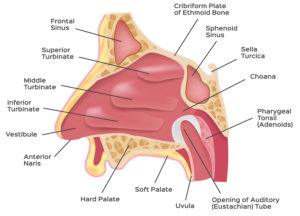Nasal Endoscopy
 Nasal endoscopy is an in-office procedure in which doctors use a small telescope that utilizes fiber optic bright light transmission to visualize different aspects of the nasal cavity.
Nasal endoscopy is an in-office procedure in which doctors use a small telescope that utilizes fiber optic bright light transmission to visualize different aspects of the nasal cavity.
The Benefits of a Nasal Endoscopy
By providing a magnified, high-quality view of the structures of the upper airway, rigid nasal endoscopy allows doctors to evaluate the sinus openings, nasal turbinates, eustachian tubes and posterior pharynx (back of the throat). It is extremely useful in determining the presence of nasal polyps, septal deviation, turbinate enlargement, sinus obstruction and the presence of signs consistent with acute or chronic sinusitis.
Additional Procedure Details
Prior to performing nasal endoscopy, the nose is decongested and anesthetized with a topical decongestant and an anesthetic agent. The nose and the front teeth can be numb for a period of one to three hours after the procedure is performed. Complications are very uncommon but can include bleeding, so make sure your doctor knows if you are taking aspirin or blood thinners.
